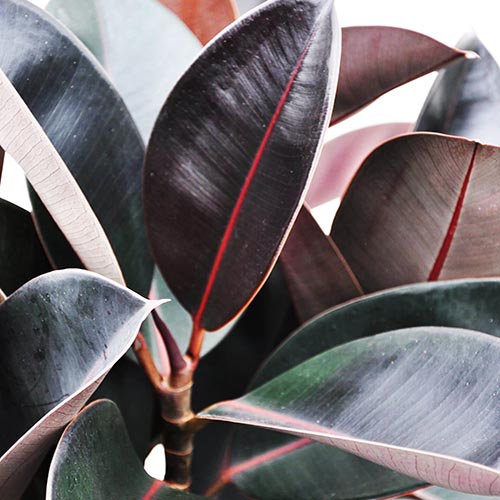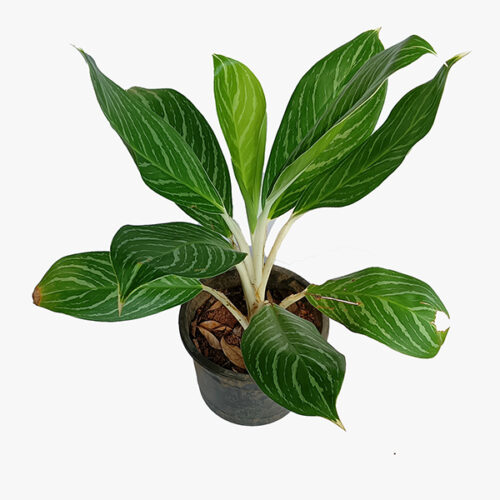Quantity: A single plant. The size of the plant is as that in the image given for this product.
Ficus Elastica, more commonly known as the Rubber Plant, is a leafy plant native to the tropics and often found naturally growing to greats heights – up to 100m! It?s often seen sending down aerial roots which form into trunks when they touch the ground, allowing it to spread far and wide forming a bridge like structure across roads and pathways.
It?s also a favourite amongst house plant lovers for it?s easy care and speedy growth during the warmer months. There are a few variations amongst this genus of fig (Robusta, Black Prince, Tineke etc?) which each bring different colours and variegations to the foliage ? pinks and whites, deep, rich (almost black) greens, and greens and whites. Although they prefer a warmer, humid environment, they are fairly tolerant and hardy when in a happy spot.
Although in their native habitat they are used to seasons of heavy rain, when kept as an indoor plant they prefer their soil to be left to dry out completely between waterings. Once dried, a good soaking in a pot with sufficient drainage will keep them happy until they?re dry again.
They also love humidity, so misting them regularly and grouping them with other plants from a similar environment (to create a mini microclimate) will benefit your Elastica greatly and help prevent them dropping their leaves.
Whilst Ficus Elastica enjoy the warmth, they won?t tolerate being close to a heat source or sat in direct sunlight. Bright but indirect light is their ideal, placed in a warm room without being sat too close to a radiator or draught. A bathroom with lots of natural light would suit them well as there is naturally more humidity in the air.
Although most houseplants want to be re-potted yearly in the spring, the Rubber Plant likes their roots to be cramped and compact so only need potting into something larger every 2-3 years. You can see if they need re potting by checking for roots poking through the drainage holes. Although they are happy to stay in the same pot, a layer of fresh compost at the top of the plant will be of great benefit and give them the extra nutrients they need to continue growing. This, along with a monthly feed of houseplant fertiliser, will keep your plant happy and healthy so you can watch it thrive!
Ficus Elastica are often sold as a single stem plant, or with 3 single stems in one pot. If you want to achieve a branchier more tree like Ficus, pinching back the growing tip of the plant should do the trick. But be warned, the milky sap this plant releases when cut can be an irritant to the skin and also toxic to cats and dogs ? be sure to rinse your hands after touching and keep out of the way of curious pets!
To Propagate:
We have found the best propagation method to be by stem cutting ? although this doesn?t always guarantee results, we have found it to be the most reliable way.
Trim the growth tip of the plant so there is a stem length of approx. 30cm (10-12inches) and leave the milky sap to dry out for about an hour.
Once dried, insert the end of the stem into gritty compost and keep the soil moist and in a bright and warm area (no direct sunlight).
Once the cutting has established a strong and healthy root system, your plant will grow as a your parent plant does and should be re-potted once the roots are showing through the drainage holes in the pot.









Reviews
There are no reviews yet.